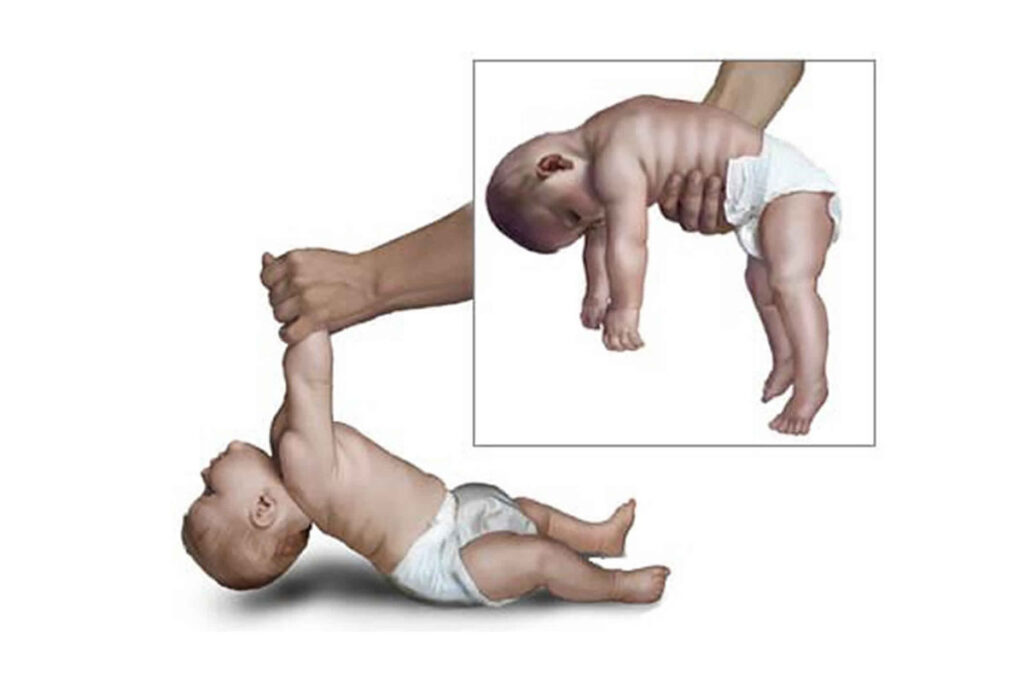What is Hypotonia?
- ‘Decreased resistance to passive movement’ or ‘low muscle tone’
- Usually associated with joint hyper mobility
- May be associated with reduction in spontaneous movement
What are the causes of hypotonia?
There are many reasons why an infant may be hypotonic. With a structured approach, including experienced assessment and personalised investigations, a Paediatric Neurologist can differentiate the following causes.
Central Causes:
- Primary Neurological Abnormality, e.g. malformation of brain, Prader Willi Syndrome
- Due to disordered function elsewhere, e.g. heart condition, metabolic disorder
Peripheral causes:
- Anterior Horn Cell causes, e.g. Spinal Muscular Atrophy (SMA)
- Lower motor neuron or peripheral nerve issues, e.g. Axonal Neuropathy
- Neuromuscular junction issues, e.g. Myasthenia
- Muscle causes, e.g. Myopathy
Mixed
- Both central and peripheral causes, e.g. Mitochondrial disorder, Congenital Muscular Dystrophy
When is the problem evident? Any clues?
- Neonatal period, especially, respiratory and feeding difficulties
- Usually towards the end of first year, i.e. motor delay
- Early presentation may be associated with severe underlying cause
When shall I see a Paediatric Neurologist?
The goals of clinical evaluation by a paediatric neurologist or Dr Yeo are:
- To establish a causation of hypotonia so an important neuromuscular or genetic disorder is not missed
- To personalise or target specific diagnostic testing (if indicated), and minimise unnecessary investigations
- To inform decision about management strategies or possible specific treatment
- To facilitate accurate prognosis and risk of recurrence/ future antenatal testing
The appointment will involve a detailed evaluation by our paediatric neurologist, Dr Yeo, including a medical history, physical examination, and neurological assessment.
After careful evaluation, Dr Yeo may recommend further investigations, such as Blood, Urine or Cerebrospinal Fluid (CSF) analysis for special chemical or mineral levels, audiological testing and ophthalmological evaluation. MRI brain is recommended as it is more sensitive in picking up abnormal changes in the brain. EMG/ NCS (Electromyography/ Nerve Conduction Test) tests may be requested to analyse your child’s muscle and nerve signals/ pattern. Genetic testing or Muscle biopsy may be suggested depending on initial or subsequent assessment.
Please click ‘Blood Tests & Metabolic Testing’ and ‘Genetic Testing’ for details.
References
Dr Yeo’s recent peer-group review journal publications and abstracts regarding Neurometabolic disorders:
Leow, XYJ & Tan, JTC & Yeo, Tong & Wong, Kenneth & Mahadev, Arjandas & Ang, Bixia & Vasanwala, Rashida & Ng, Zhi Min. (2021). Evaluation of risk factors associated with fragility fractures and recommendations to optimise bone health in children with long-term neurological condition. Singapore Medical Journal. 64. 10.11622/smedj.2021124.
Hamilton R, Yeo TH, et al. Sensitivity and specificity of the light-adapted ERG in suspected neuronal ceroid lipofuscinoses (NCLs). Documenta Ophthalmologica, Aug 2016;133 (1S).
Yeo TH, Vassallo G, Judge M, Laycock N, Kelsey A, Crow YJ. Infantile neurological Degos disease. Eur J Paediatr Neurol. 2011 Mar;15(2):167-70.
Yeo TH, De Goede C, Crow Y. Biotin non-responsive familial infantile bilateral striatal necrosis associated with primary Influenzae A infection. Eur J Paediatr Neurol. 2011 May:15(1):S117-S118.
Yeo TH, et al. Coexistence of Krabbe’s disease and multiple chromosomal abnormalities: a case report. Poster presentation. Eur J Paediatr Neurol. Eur J Paediatr Neurol. 2011 May:15(1): S52-S53.
Yeo TH, et al. The value of CT brain in undiagnosed neurological disorders. Eur J Paediatr Neurol. 2009 Sept: 13(1):S124.






